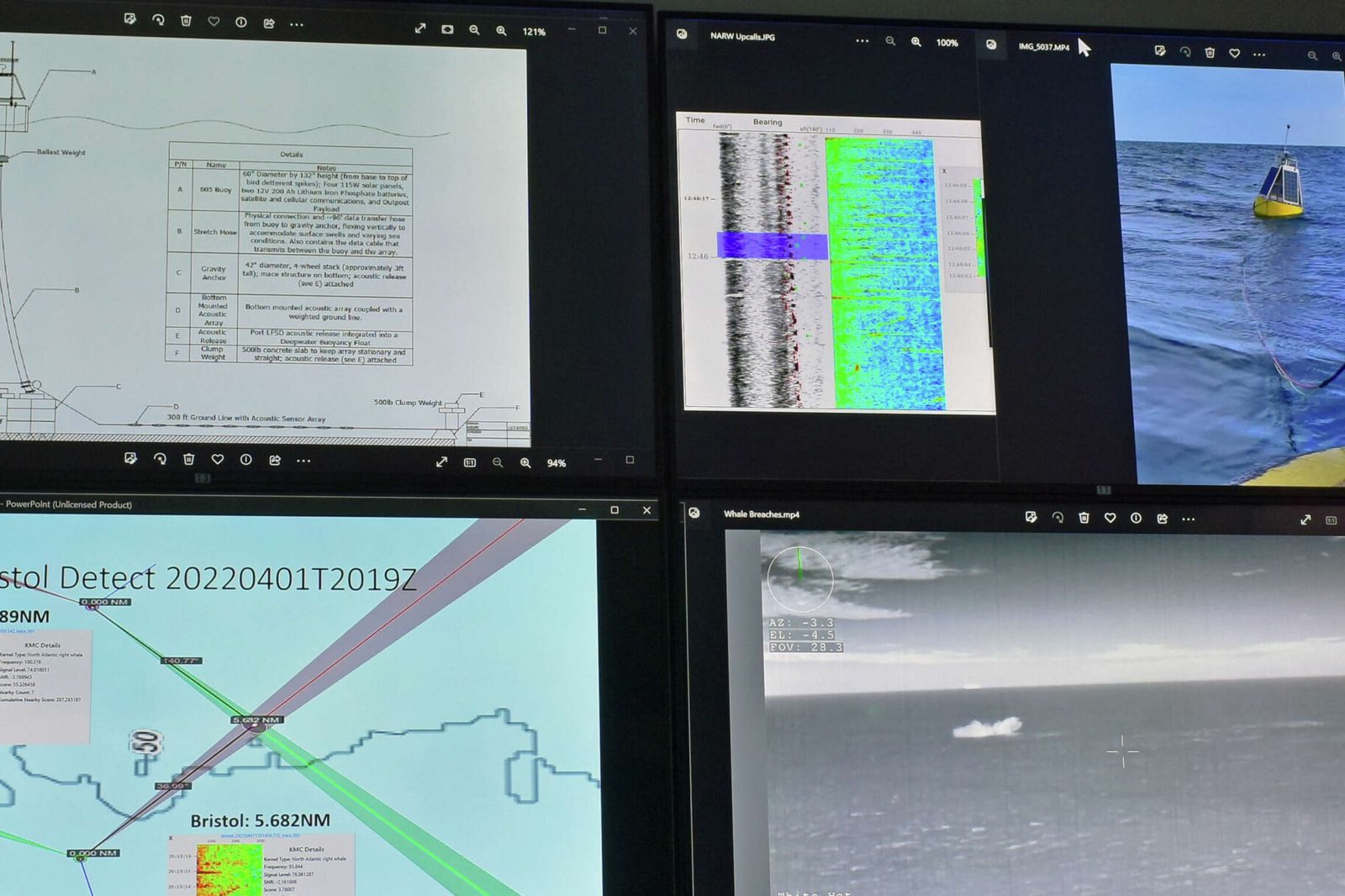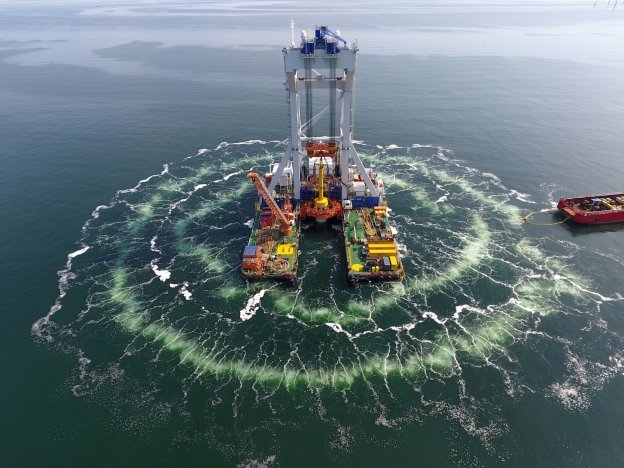Press & Media
In The News.

In The News.
With millions of dollars from venture capital investors, a Connecticut startup that emerged from the submarine industry is using artificial intelligence to pioneer new underwater technology, from tracking illegal fishing to protecting whales during the construction of offshore wind farms.

A ThayerMahan buoy camera catches the splash of a breaching whale in the Georges Bank area off Nantucket, as depicted in a reel loop at the company's headquarters control room in Groton, Conn. The National Oceanographic and Atmospheric Administration has expressed interest in using ThayerMahan's platforms to track whales and commercial fishing vessels that may be operating illegally in U.S. waters. Photo taken by Alexander Soule/Hearst Connecticut.
Miles off the U.S. coast, Groton-based ThayerMahan is readying a nautical network of buoys and roaming sea drones to ID commercial fishing trawlers that may be operating illegally, whether in U.S. territorial waters or those of other nations where catch limits are abused routinely to put pressure on fish stocks.

ThayerMahan workers move solar panels in August 2023 that will be installed on top of one of its ocean buoys that dangle hydrophones deep into the water, with the U.S. Navy and the National Oceanographic and Atmospheric Administration in the Groton, Conn.-based startup's customer base. Photo taken by Alexander Soule/Hearst Connecticut.
Closer to home in partnership with Hydrotechnik-Luebeck based in Germany, ThayerMahan is assisting offshore wind developers with a system to "bubble wrap" wind turbine monopiles with curtains of sound-absorbing bubbles, in an effort to minimize disruptions for whales and other marine life. ThayerMahan is tracking whale positions to determine if any are swimming too close to turbine construction sites and is helping wind farm developers.

Vineyard Wind is using a system from Groton, Conn.-based ThayerMahan that creates curtains of bubbles ringing wind turbine monopoles, as a way to help whales steer clear during construction (press photo via Vineyard Wind).
Mike Connor retired as a vice admiral overseeing the U.S. Navy's submarine fleet to start ThayerMahan in 2016, seeing the need for a startup that could develop a networked system of underwater sensors to help the Navy identify vessels. Connor named the company after the naval power theorist Alfred Thayer Mahan, who was a major influence in the global naval buildup preceding World War I.
Mike Connor stated,
"We didn't set out to serve the wind energy industry — we set out to serve the U.S. government. We looked at these emerging technologies — low-power electronics, cloud computing, satellite communications — and how we could supplement this truly exquisite force of very high-end ships and submarines with a large number of relatively inexpensive, autonomous systems that could operate in a very distributed way."
ThayerMahan got a $50 million vote of confidence in April from venture capital firms, Vineyard Wind and other investors, as it develops the two initiatives and others. The bubble-curtain system is being used by Vineyard Wind, which has begun a wind farm project off Nantucket.
Vineyard Wind is a joint venture involving Orange-based Avangrid and Copenhagen Infrastructure Partners.
For its system to monitor commercial fishing activities, ThayerMahan is working with the Seattle-based Allen Institute for AI and Ocean Aero of Gulfport, Miss. Tethering hydrophone arrays to buoys and trailing them from small, uncrewed vessels, the system can listen over long distances to trawler engines, propellers, and gear.
The engines, propellers, and gear create unique acoustic signatures for each vessel, according to Kevin Lopes, director of strategy and marketing for ThayerMahan.
"It's a persistence game," Lopes said. "You want to be able to stay out there a long time."